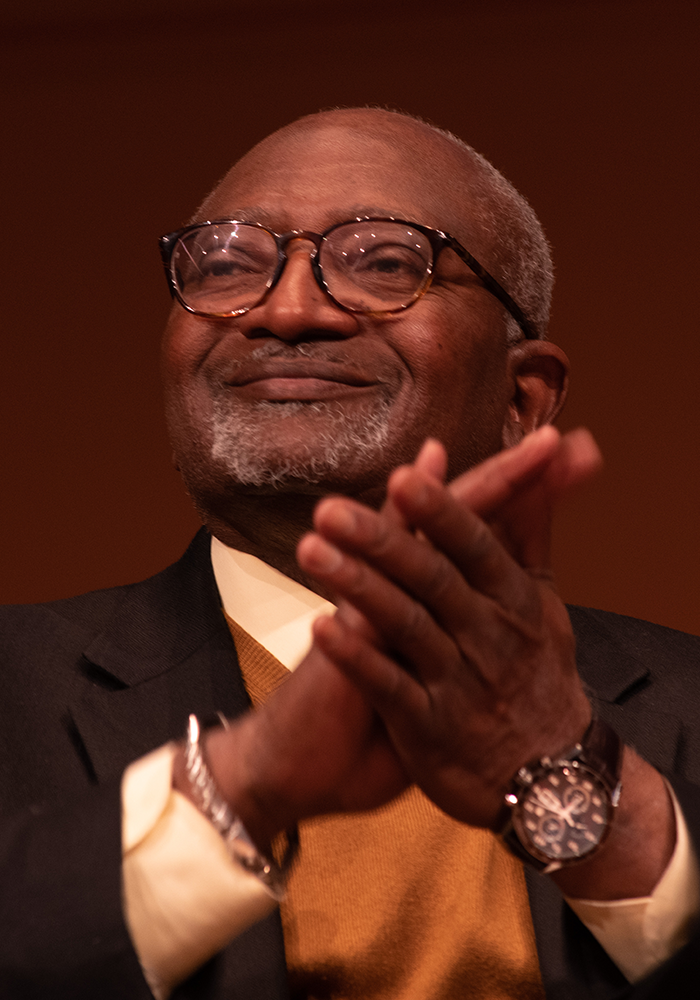Culture
MFA Celebrates Black History Month by Honoring Black Leaders in STEM

This Black History Month, MFA is honoring a few of the many pioneers in the Black community who have made significant contributions to the science, engineering, and environmental movements while advocating for representation of the Black community and advancement within the STEM field.
There remains a racial gap in the science and technology workforce. A report released by the National Science Foundation in 2023 shows that Black workers make up only 9 percent of the total STEM workforce in the year 2021. MFA recognizes the current disparities among Black workers in the STEM field and amplifies the voices and efforts of Lisa P. Jackson, Dr. Robert Bullard, and Wangari Maathai, whose impacts and examples broke barriers and highlighted environmental injustices seen among the Black community. Explore the biographies and resources we’ve gathered to learn more about the life and work of these three pioneers breaking new ground in the STEM fields.
Lisa P. Jackson
EPA engineer since 1987, and first Black person to serve as EPA Administrator
 Lisa P. Jackson is a great role model for promoting diversity in the professional workspace. With a background in chemical engineering, she started working for the EPA as a staff scientist in 1987 in New York. A little over 20 years later, she served as the first Black person to be appointed EPA Administrator. In her time as EPA Administrator, a main focal point for Jackson was supporting under-represented communities in environmental action. She has been featured on many lists of important and influential people because of her work in protecting the environment, promoting environmental justice, and combating environmental threats to our nation.
Lisa P. Jackson is a great role model for promoting diversity in the professional workspace. With a background in chemical engineering, she started working for the EPA as a staff scientist in 1987 in New York. A little over 20 years later, she served as the first Black person to be appointed EPA Administrator. In her time as EPA Administrator, a main focal point for Jackson was supporting under-represented communities in environmental action. She has been featured on many lists of important and influential people because of her work in protecting the environment, promoting environmental justice, and combating environmental threats to our nation.
Dr. Robert Bullard
Father of Social and Environmental Justice
 Dr. Robert Bullard is considered to be the father of environmental justice. He is quoted as saying that “environmental justice embraces the principle that all people in communities are entitled to equal protection of our environmental laws.” In 1979, he provided research for the first litigation dealing with environmental racism in United States history. He is aware of how it is hard to define racism, especially racism relating to the environment, which has since prompted many studies, articles, and books about environmental racism, climate justice, and community resilience. He is currently the director of the Bullard Center for Environmental and Climate Justice and continues to educate the community on the principle that “people have the right to a clean, healthy, sustainable environment without regard to race, color, [or] national origin. It’s just that simple.”
Dr. Robert Bullard is considered to be the father of environmental justice. He is quoted as saying that “environmental justice embraces the principle that all people in communities are entitled to equal protection of our environmental laws.” In 1979, he provided research for the first litigation dealing with environmental racism in United States history. He is aware of how it is hard to define racism, especially racism relating to the environment, which has since prompted many studies, articles, and books about environmental racism, climate justice, and community resilience. He is currently the director of the Bullard Center for Environmental and Climate Justice and continues to educate the community on the principle that “people have the right to a clean, healthy, sustainable environment without regard to race, color, [or] national origin. It’s just that simple.”
Wangari Maathai
Black Environmentalist and Founder of the Green Belt Movement
 Founding the Green Belt Movement and receiving the 2004 Nobel Peace Prize Laureate is no small feat for Wangari Maathai. She was born in Kenya and received her bachelor’s and master’s degrees in the United States. Upon receiving her PhD from the University of Nairobi in anatomy, she focused on biological science. She was always a voice for democracy, human rights, and environmental conservation, taking her efforts all the way to the United Nation to address environmental issues in Kenya. The Green Belt Movement was a grassroots organization founded in 1977 by Maathai to respond to the needs of rural Kenyan women by introducing community-based tree planting. Wangari Maathai and the Green Belt Movement continue to advocate for environmental conservation in reclamation and restoration of forest lands in Africa.
Founding the Green Belt Movement and receiving the 2004 Nobel Peace Prize Laureate is no small feat for Wangari Maathai. She was born in Kenya and received her bachelor’s and master’s degrees in the United States. Upon receiving her PhD from the University of Nairobi in anatomy, she focused on biological science. She was always a voice for democracy, human rights, and environmental conservation, taking her efforts all the way to the United Nation to address environmental issues in Kenya. The Green Belt Movement was a grassroots organization founded in 1977 by Maathai to respond to the needs of rural Kenyan women by introducing community-based tree planting. Wangari Maathai and the Green Belt Movement continue to advocate for environmental conservation in reclamation and restoration of forest lands in Africa.
Image attributions:
Kingkongphoto & www.celebrity-photos.com from Laurel Maryland, USA, CC BY-SA 2.0 <creativecommons.org/licenses/by-sa/2.0>, via Wikimedia Commons
University of Michigan School for Environment and Sustainability from Ann Arbor, CC BY 2.0 <https://creativecommons.org/licenses/by/2.0>, via Wikimedia Commons



